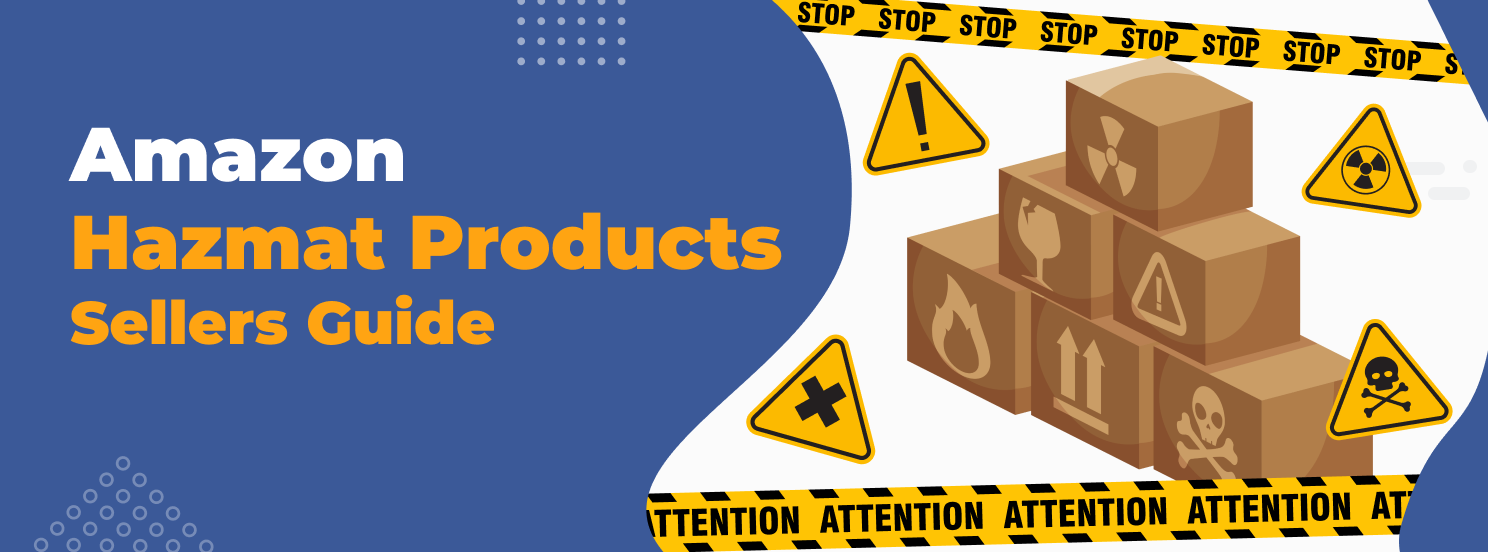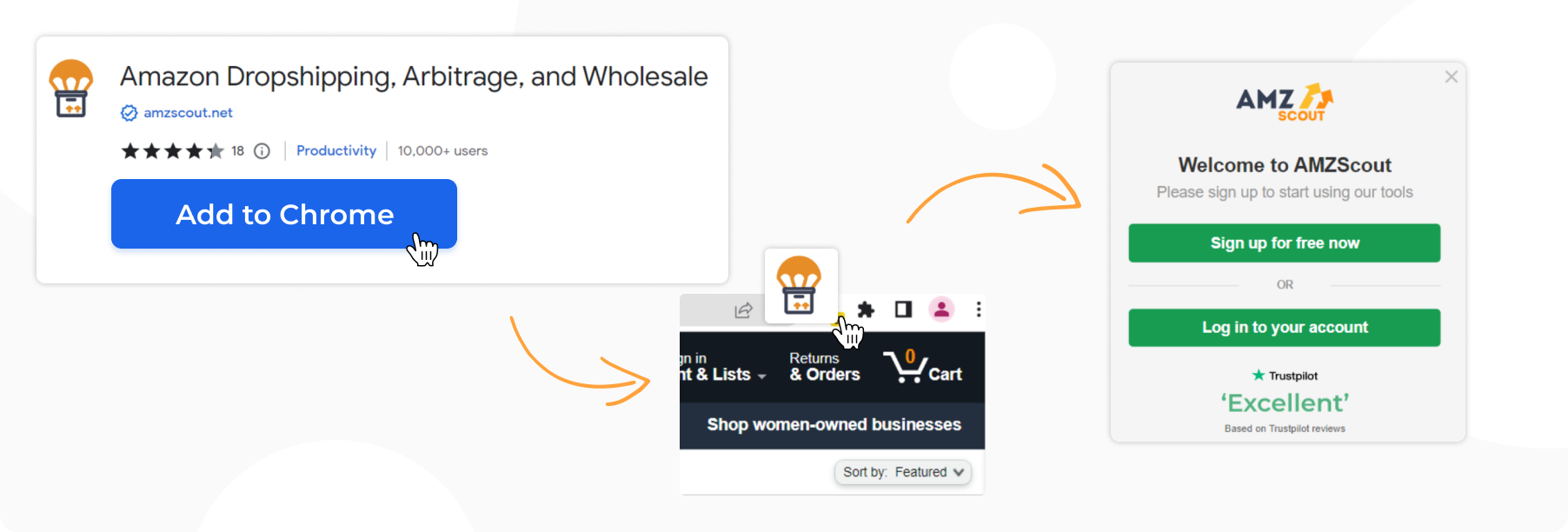
How to Check if Products are Hazmat and Sell Them on Amazon
Selling with Amazon FBA presents numerous complexities, especially when dealing with hazardous materials (HAZMAT) items. Before deciding to sell these items, it's important to assess whether they align with your business goals and if they are worth the potential challenge. This article will guide you through the process of identifying, checking, and selling hazmat products on Amazon.
Table of contents
What are HAZMAT Products
Here are the key points every seller should consider when deciding to sell products considered to be hazardous materials through Amazon FBA.
The Meaning of HAZMAT
Hazmat (short for “hazardous materials”) - A range of products considered to pose certain risks. Hazmat items include any substances that pose immediate or long-term threats to health, safety, and property, such as risk of explosion risk or chronic exposure effects.
Amazon’s HAZMAT Policy
Amazon's hazmat policy is designed to ensure the safety of its fulfillment center operations and compliance with legal regulations. Examples of common dangerous products include items like flammable liquids and batteries. According to Amazon’s hazmat policy, the following rules must be followed:
Sellers must identify and label hazmat items accurately.
They need to understand the risks associated with their products.
Compliance with all local, national, and international hazmat regulations is mandatory.
This often involves submitting Material Safety Data Sheets (MSDS) or other relevant documents.
Amazon conducts a detailed review of all potentially hazardous products.
Based on the outcome of this review, Amazon may approve, impose conditions, or reject the product for FBA.
Approved hazmat items must be packaged and labeled according to Amazon's safety standards.
Amazon's hazmat policies are aimed at safeguarding the marketplace, its workers, customers, and the environment from the potential risks associated with any hazardous materials. Following these regulations is essential.
The Difference Between Hazmat and Dangerous Goods
While the term “dangerous products” encompasses a broad range of things, Amazon frequently uses this phrase interchangeably with “hazmat”, which essentially means the same thing. As outlined in Amazon's policies and guidelines, ’dangerous products” are likely to be encountered more frequently, with hazmat products falling under this broader category.
Amazon’s platform offers the FBA Dangerous Goods program, designed for sellers to manage and sell hazardous products safely, and adhere to strict safety and documentation standards. Joining this program provides sellers with numerous opportunities to sell a wide range of items, from electronics to chemicals.
Selling hazardous products might be a lucrative idea because the competition is lower in these niches, and it’s possible to sell in special markets where others don't go because of the strict regulations.
Examples of Hazmat Products
Amazon classifies a variety of products as hazardous materials. Some products are completely banned on Amazon, while others are allowed to be sold under certain conditions.
The permissible product list of hazardous materials according to this program can vary widely, but here are some common categories and examples:
Hazmat Products that Can Be Sold through FBA
Consumer Electronics with Lithium Batteries, such as smartphones, laptops, power banks, etc.
Gadgets with Magnetic Elements, for example, certain types of high-strength magnets.
Hazmat Products that Can be Sold in Limited Quantities through FBA
Aerosols: Spray paints, hairsprays, and deodorant sprays.
Chemical Products, Oxidizers, and Organic Peroxides: Glues, dyes, bleaches, fertilizers, pool chemicals, drain cleaners, battery acids, rust removers.
Flammable Liquids and Solids: Gasoline, lighter fluid, certain types of paint and paint thinners, alcohol-based hand sanitizers.
Dangerous Products and Hazardous Materials that Can Not be Sold through Amazon
Explosive substances: Fireworks or certain types of ammunition.
Toxic gases: Chlorine, ammonia.
Substances liable to spontaneous combustion, for example, certain types of oil-soaked rags.
Substances that are dangerous when wet, such as sodium metal.
Infectious substances: Medical waste, certain laboratory samples.
Radioactive materials: Uranium and radium used for various medical treatments.
Toxic Substances: Pesticides, certain types of cleaning chemicals, rodent poisons.
Amazon's classification system can change based on updated regulations and safety standards. Every seller needs to verify whether each product they intend to sell meets Amazon's guidelines or is classified as hazmat. In the next sections, we will explain how to do this.
How to Check if a Product is HAZMAT
When selling on Amazon, avoiding hazardous (hazmat) products can make running a business easier. There are numerous lookup tools that can help sellers find plenty of products that are safe to sell on Amazon without risks.
However, if you’ve decided to sell hazmat products, you can find ideas with the help of these tools.
Using Special Tools
One useful tool that can help you determine a product’s hazmat status is the Amazon Dropshipping, Arbitrage, and Wholesale Extension.
Here's a step-by-step guide on how to use this tool:
1. Install the Amazon Dropshipping, Arbitrage, and Wholesale Extension.
2. Search for products. Type in the name of a product or a few keywords into the Amazon search field (for example, “spray paint”).
3. Open the product page. Select a product from the page of search results to examine it in more detail.
4. Check the HAZMAT status. The extension will indicate if an item is classified as hazmat.
5. Check other metrics. To understand if a product is worth selling, review vital metrics (like sales and price history, or whether a product is private label).
6. Calculate potential profits. Use the calculator to estimate your probable profit margin, and factor in Amazon's fees and hazmat handling charges, if applicable.
7. Make your choice. Select the product that seems the most appropriate for your business.
As you can see, utilizing a product research tool with a built-in Amazon hazmat checker is adequate to help you decide which items to sell or not sell on Amazon. These tools not only assist you with checking for hazardous items, but they also offer a multitude of additional functions.
How to Sell Hazmat Products on Amazon
Despite the potential challenges, selling hazmat items can be rewarding. Here's a five-step guide to help you get started:
Step 1. Choose your product
Start by using AMZScout tools, as described above. Select products by looking at how much people want them, how much competition there is, and how much profit you could make. Make sure the product you choose is allowed on Amazon and doesn't break their rules for selling hazardous materials (hazmat).
Step 2. Obtain permission
If your product is considered hazardous, first you need to get both permission and special documentation from the manufacturer. Only then will Amazon allow you to sell the product and apply for the Dangerous Goods program. You'll need to provide numerous details about your product, including what it contains and any safety information.
Step 3. Prepare your products
Amazon has specific rules for how you need to package and label products that are hazardous. Make sure you follow these rules carefully to ensure that your products are safe and ready for Amazon.
Step 4. Send your products to Amazon
Using Amazon FBA allows sellers to ship products conveniently, as well as utilize Amazon's warehouse services. This is why it might be a good option to send goods to Amazon’s fulfillment center, as this can reduce your workload while improving customer satisfaction thanks to quicker deliveries and top-notch support.
Once your products are prepared properly, you need to send them to an Amazon fulfillment center, which is where Amazon keeps your products until they're sold. There are special rules for shipping hazardous materials, so make sure you follow them closely.
5. Begin to Sell
Once Amazon receives and checks your products, you can start selling them online. If you plan to sell a product that is already available on Amazon, you can join the existing listing. If your product is brand new, create a new listing with attractive descriptions and product images. Amazon will take care of storing your products, packing them each time someone makes a purchase, and sending them to the customer.
Conclusion
Selling hazmat products on Amazon is a nuanced process that demands a thorough understanding of the platform's policies and regulations. First, check the hazmat status for any items you want to sell, and be sure to adhere to Amazon's guidelines, so you can tap into this specialized market. Whether you prefer to avoid selling hazmat items or you want to dive into this category, the key to success lies in performing thorough research, studying prep requirements, and following all of Amazon’s guidelines.







